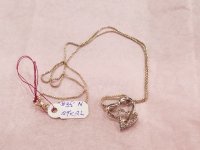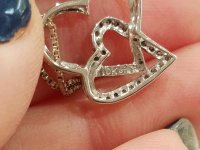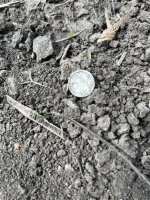I've recently started expanding my thrift store treasure hunting to jewelry. I have a question for the pro's in hopes of getting better.
1. Most times jewelry is displayed in a glass case where you would need the store clerks assistance when wanting to look closer at a piece. Do you guys ask to see every single piece or do you have an eye for signs of "unmarked" gold. What are some ways to tell if it's worth taking a closer look? How do you guys know if a piece is anything more special than a piece of costume jewelry without asking the clerk to look at every single piece? Are there tell-tale signs I should be looking out for?
I am usually good with stamps, hallmarks, and artist signatures. I just want to find a gold bracelet mixed in a sea of junk. Thanks for your help!
1. Most times jewelry is displayed in a glass case where you would need the store clerks assistance when wanting to look closer at a piece. Do you guys ask to see every single piece or do you have an eye for signs of "unmarked" gold. What are some ways to tell if it's worth taking a closer look? How do you guys know if a piece is anything more special than a piece of costume jewelry without asking the clerk to look at every single piece? Are there tell-tale signs I should be looking out for?
I am usually good with stamps, hallmarks, and artist signatures. I just want to find a gold bracelet mixed in a sea of junk. Thanks for your help!



 ... so there is that.
... so there is that. 





